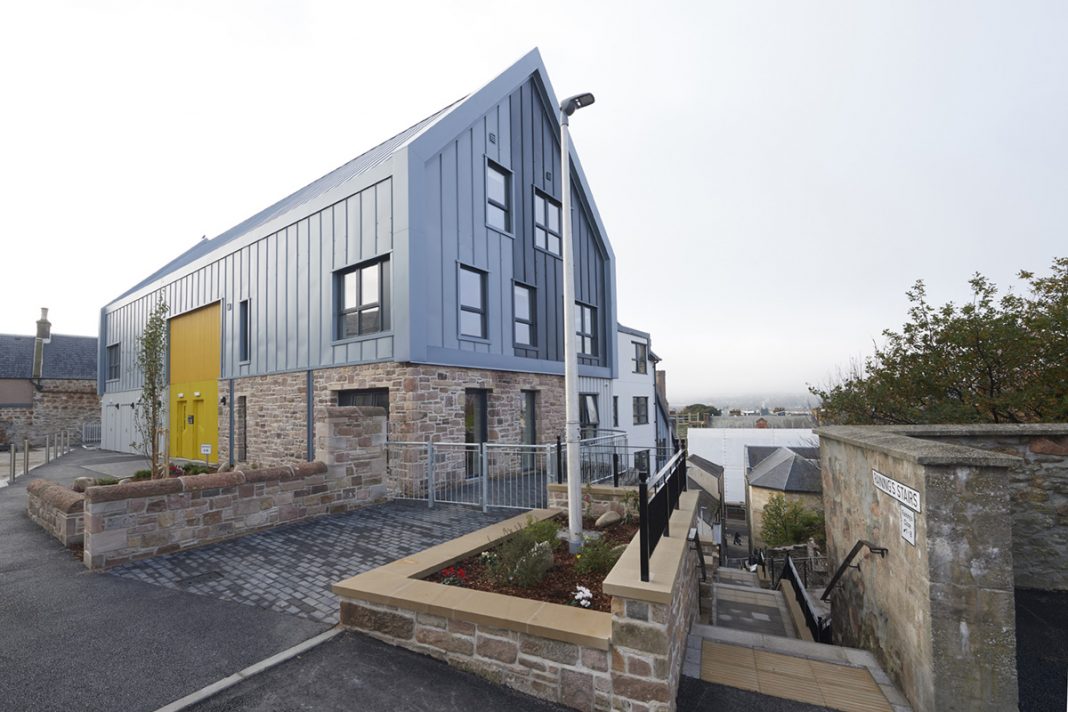Modular construction is getting a lot of attention for the undoubted benefits it offers but it is only one of many offsite solutions, like timber frame, that have their own unique advantages, says Malcolm Thomson, sales director at Scotframe
With the UK and Scottish governments keen to tackle the housing crisis – and setting stretch targets for the number of new homes – institutional investors have pricked up their ears to the potential earnings from offsite construction.
Currently touted as the ‘wunderkind’ of offsite construction is modular – or if you are of a certain vintage – an updated prefab for the 21st century. Whichever term you prefer, modular construction means three-dimensional homes built in a factory and shipped to the site almost fully made. Assembling involves fitting the modules together, connecting services and adding the finishing touches.
Several financial investments have accelerated the buzz about modular. In April Goldman Sachs dropped a cool £75m into a UK modular housing manufacturer TopHat. Then Japanese housebuilding giant Sekisui House took a 35% stake in Manchester-based Urban Splash. Most recently Places for People confirmed the purchase of 750 modular units from Ilke Homes, with financial backing from Homes England.
However, while the buzz is getting louder, it’s worth bearing in mind that the current capacity of the industry is tiny – around 8,000-10,000 homes, with fewer, actually delivered. Modern methods of construction as a whole, according to the National Homes Building Council, accounts for 15-20% of new-build homes, while modular itself probably accounts for less than 5%.
Timber frame solutions
There is no doubt that offsite construction is a game-changer when it comes to tackling the housing shortage, not least because of the well-documented skills shortage in the sector. However, while modular has many positives – it’s quick, easy to assemble, more energy-efficient and less reliant on good weather than traditional brick or block construction – we need to be mindful that modular will only ever be part of the solution to the housing shortage. There’s another offsite solution that offers even more benefits – timber frame construction.
Scotland leads the way in this construction model, with 83% of new-build Scottish homes using timber frame, compared to just 23% in England. This is partially explained by the impressive thermal performance of timber-built houses given Scotland’s climate. Timber is also a particularly attractive option for self-build, which has always played a larger role in Scotland.
According to the Structural Timber Association, the market share for timber construction is rising steadily, aided by technologies such as cross-laminated timber and insulated panel systems like those used by Scotframe in our self-build homes.
Indisputably, offsite-manufactured timber structures have low operational and maintenance costs and achieve high-performance standards. And taking a ‘fabric first’ approach – where energy-efficient properties are built into a building’s exterior ‘envelope’ rather than relying on add-on’s such as photo-voltaic panels or smart home gadgets – can significantly improve a building’s sustainability credentials; an overall energy reduction of up to 33% over a building’s lifetime.
Cost savings are an important factor too. A timber frame solution can often be cheaper in many instances, and that’s before you factor in the significantly shorter build time.
Timber frame also wins over modular when it comes to aesthetics. Modular, by its very nature, has to fit together in a pre-ordained way – the properties all look the same. Timber frame properties can be constructed to specific designs and have high kerb appeal. And this also applies to large, custom-build projects where the requirement is for numerous or bespoke house types.
So while modular will certainly play a part in helping the industry deliver more homes, it is only one of many offsite solutions. While it works for short-term homes in popular city areas, the need for something more personal will usually prevail with most buyers.
So my message to my colleagues working in the house building sector is this: by all means consider modular homes as part of your offsite construction strategy. But think timber frame too, as it offers a much more attractive, versatile and cost-effective package of benefits for your future house buyers.
 Malcolm Thomson
Malcolm Thomson
Sales director
Scotframe
Twitter: @scotframe












![[VIDEO] Making DorTrak reports easy to read with Fireco Inspecting fire doors at Fireco, firedoor technology, 2023](https://www.pbctoday.co.uk/news/wp-content/uploads/2024/04/JPZ_2364-web-218x150.jpg)
![[VIDEO] Re-flow Field Management review by Traffic Management Installations When TMI began subcontracting for councils and government bodies, they wanted to present their site reporting in a more professional manner](https://www.pbctoday.co.uk/news/wp-content/uploads/2025/03/TMI-Media-1-218x150.png)
